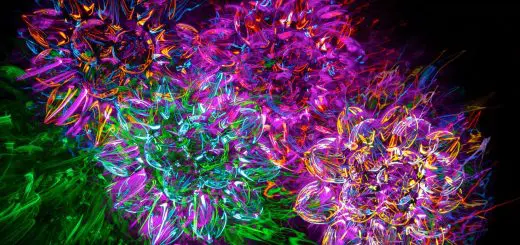What Are Poltergeists and How Do They Manifest?

Looking for more amazing products? Check out our online store and explore our collection here! Happy shopping!
Before diving in, please note: This post is for informational purposes only. If you’d like to know more about how we approach topics, feel free to check out our friendly Disclaimer Page.
Hey there, amazing readers! 
We’re committed to delivering quality posts, and your support (even just sticking around despite the ads) means everything to us. So, bear with us, and thanks for helping us keep the good vibes rolling. Now, on to the fun stuff!
TRANSLATE BUTTON AT THE END OF THE ARTICLE
A Quick Overview
Poltergeists have intrigued humanity for centuries, captivating our imaginations with tales of supernatural phenomena.
But what are these mischievous spirits, and how do they manifest?
Let’s dive into the enchanting world of poltergeists, uncovering their history, behaviors, and what makes them stand out among other paranormal entities.
So grab a cozy seat, and let’s explore this fascinating topic together!
What Exactly Are Poltergeists? A Brief Overview
Poltergeists, a term derived from the German words "poltern" (to make noise) and "geist" (ghost), represent a unique category of supernatural entities.
Unlike traditional ghosts, which are often seen as the spirits of the deceased, poltergeists are more akin to energetic disturbances.
They are known for causing physical disturbances, such as moving objects, knocking noises, and even creating chaos in a home.
What sets poltergeists apart is their often playful or mischievous nature.
They seem to have an affinity for creating confusion, leading to a mix of fear and fascination among those who encounter them.
These manifestations can range from harmless pranks to more alarming activities like throwing objects or creating loud noises.
While poltergeists are often associated with hauntings, they don’t always involve a specific location or a tragic backstory.
Instead, they appear to be linked to individuals, particularly adolescents, creating a fascinating dynamic between the spirit and the living.
The Fascinating History of Poltergeist Lore
The lore surrounding poltergeists dates back centuries, with reported incidents found in ancient texts.
In medieval Europe, tales of poltergeist activity were often attributed to witchcraft or demonic possession.
People believed that these spirits were manifestations of evil forces, leading to widespread fear and suspicion.
One of the most famous early cases occurred in the 16th century in Germany, where a poltergeist caused havoc in a household.
The fearful family sought help from local clergy, who ultimately attributed the disturbances to a witch’s curse.
This incident laid the groundwork for how society viewed poltergeists for years to come.
In the 1800s, the modern interpretation of poltergeist activity began to take shape.
Researchers started documenting phenomena scientifically, leading to a more nuanced understanding of these entities.
The work of figures like the physicist William Crookes and the psychologist William James helped shift perceptions from mere superstition to a subject worthy of inquiry.
Today, poltergeist stories continue to be a staple in pop culture—from movies to ghost-hunting shows.
Their fascinating history adds layers to the intrigue surrounding them, reminding us that the line between reality and the supernatural is often blurred.
Common Myths About Poltergeists Debunked
As with many paranormal phenomena, poltergeists are often wrapped in myths and misunderstandings.
Let’s clear the air around some common misconceptions:
Myth 1: Poltergeists are always malevolent. While some poltergeist encounters can be frightening, many are harmless.
Their antics often resemble playful mischief rather than malevolence.
Myth 2: Poltergeists are the souls of the deceased. Unlike traditional ghosts, poltergeists do not necessarily represent the spirits of the dead.
They are often linked to living individuals, particularly adolescents experiencing emotional turmoil.
Myth 3: You can banish a poltergeist. Many people believe that a simple exorcism or cleansing ritual will get rid of a poltergeist.
However, since these disturbances are often linked to emotional energy, resolving the underlying issues may be more effective.
Myth 4: Poltergeist activity is rare. While not everyone experiences poltergeist activity, reports of strange occurrences are more common than one might think.
Many people are unaware of their experiences, attributing them to mundane explanations.
By debunking these myths, we can approach the subject of poltergeists with a more informed perspective.
How Poltergeists Differ from Other Spirits
Poltergeists stand out not just because of their antics but also due to their unique characteristics when compared to other types of spirits.
Physical Manifestations: Unlike traditional ghosts that may appear as apparitions or orbs, poltergeists are known for their ability to physically interact with the environment.
They may move objects, create sounds, or even manipulate energy in ways that other spirits typically do not.
Emotional Connection: Many researchers believe that poltergeist activity is often tied to the emotional state of a specific individual, often an adolescent.
Changes in mood, stress, or anxiety can trigger disturbances, making this connection unique compared to other types of hauntings that may not be tied to a living person’s emotional state.
Duration of Activity: Poltergeist activity tends to be more transient than traditional hauntings.
While ghosts may linger in one place for years, poltergeists often appear in bursts, sometimes for days or weeks, before disappearing entirely.
Understanding these differences helps us recognize the complexities of poltergeist phenomena and appreciate their unique nature.
Not Just a Fright: The Science Behind Poltergeists
While many view poltergeists through a supernatural lens, some researchers have sought scientific explanations for these mysterious occurrences.
Here are some of the theories that have emerged:
Psychokinesis: One popular theory suggests that poltergeist activity may be a form of psychokinesis, where individuals unknowingly cause objects to move due to their emotional or mental state.
This theory has garnered attention in psychological circles, as it ties human consciousness to physical manifestations.
Infrasound: Some researchers have pointed to infrasound—sound waves below the frequency of human hearing—as a potential cause of poltergeist activities.
These low-frequency sounds can create feelings of unease or anxiety, leading to misinterpretations of ordinary occurrences as paranormal.
Environmental Factors: Changes in the environment—like electromagnetic fields or even seismic activity—have also been considered in the study of poltergeists.
Some experts believe that these factors might influence both the perception of disturbances and the actual phenomena.
Sleep Paralysis and Hallucinations: Many people report eerie experiences during sleep paralysis, which can be mistaken for poltergeist activity.
The overlap between psychological phenomena and ghostly encounters suggests that our minds can play tricks on us, especially in heightened emotional states.
These scientific perspectives lend a different flavor to the discussion of poltergeists, providing an alternative lens through which to interpret these strange happenings.
Typical Manifestations of Poltergeist Activity
Poltergeist activity can vary widely in its manifestations.
Some of the most commonly reported phenomena include:
Moving Objects: One of the hallmark signs of poltergeist activity is the inexplicable movement of objects.
People have reported seeing items levitate, fly across the room, or suddenly drop without explanation.
Noises and Sounds: Loud banging, knocking, and even voices are frequently reported.
These sounds can be disconcerting and often occur when no one is present, adding to the mystery.
Temperature Changes: Sudden drops or spikes in temperature can accompany poltergeist activity.
People often feel cold drafts or experience an unexplainable chill.
Physical Touch: Some individuals report feeling a gentle tug on their clothing or even being pushed or shoved.
These tactile experiences can be startling and frightening.
Electrical Disturbances: Flickering lights, malfunctioning electronics, and other electrical anomalies are commonly associated with poltergeist activity.
These manifestations create a tantalizing blend of fear and intrigue, making poltergeists a topic of endless fascination.
The Role of Emotions in Poltergeist Manifestations
The link between emotions and poltergeist activity is particularly compelling.
Many experts believe that strong emotional states can act as a catalyst for disturbances.
Adolescence as a Trigger: Many poltergeist cases involve adolescents, particularly during periods of emotional upheaval.
This could be linked to the intense feelings and changes experienced during this life stage.
Stress and Anxiety: High-stress situations, such as family conflicts or personal challenges, often coincide with reports of poltergeist activity.
Emotional turmoil can create a type of energy that may manifest in physical ways.
Unresolved Conflict: When individuals struggle with unresolved emotional issues, it may lead to disturbances.
The energy generated from these conflicts can attract poltergeist behavior.
Understanding this emotional connection offers a unique perspective on poltergeists, allowing us to see them not merely as frightening entities but as reflections of human experiences and struggles.
Famous Poltergeist Cases You Might Know
Many poltergeist cases have made headlines and captured public interest throughout history.
Some of the most notable include:
The Bell Witch: One of the most famous American poltergeist stories, the Bell Witch terrorized the Bell family in Tennessee in the early 1800s.
The entity was known for causing physical disturbances and even allegedly speaking to family members.
The Enfield Poltergeist: This infamous case in the 1970s in London involved the Hodgson family, who experienced a series of alarming phenomena, including furniture moving and disembodied voices.
The case gained widespread media attention and sparked debates about the nature of poltergeists.
The Rosenheim Poltergeist: In the late 1960s, this case in Germany involved a series of strange occurrences at a lawyer’s office, including flickering lights and unexplained noises.
Investigators studied the events, leading to intriguing conclusions about poltergeist behavior.
These cases not only captivate us but also serve as reminders of the rich tapestry of human experience and the mysteries that remain.
How to Identify If You Have a Poltergeist
If you suspect that you may be dealing with a poltergeist, there are some signs to look for:
Frequent Object Movement: If you find objects moving without explanation, especially in bursts, this may be a sign.
Noisy Disturbances: Regular banging or knocking sounds, especially at odd hours, can indicate the presence of a poltergeist.
Unexplained Tactile Experiences: If you feel unusual touches or disturbances, it may be worth considering.
Changes in the Environment: Sudden temperature fluctuations or electrical anomalies can also be indicators.
If you notice these signs, it’s essential to approach the situation with an open mind and consider environmental or emotional factors that may be at play.
Staying Safe: Tips for Dealing with Poltergeists
Encountering a poltergeist can be unnerving, but there are steps you can take to manage the situation:
Stay Calm: Fear can escalate the situation.
Take deep breaths and approach the events with a level head.
Document Everything: Keep a journal of occurrences, noting dates, times, and details.
This can help you identify patterns.
Talk It Out: Discussing your feelings with trusted friends or family can help alleviate emotional tension.
Create a Positive Environment: Surrounding yourself with positive energy, whether through music, art, or laughter, can shift the atmosphere.
Seek Professional Help: If the disturbances become overwhelming, consider consulting with a paranormal investigator or therapist.
By taking these proactive measures, it’s possible to handle poltergeist activity with grace and composure.
Fun Activities Inspired by Poltergeist Stories
If you’re intrigued by poltergeists, there are plenty of enjoyable activities to explore:
Ghost Tours: Many cities offer ghost tours that highlight famous poltergeist stories.
It’s a fun way to learn about local history!
Host a Paranormal Movie Night: Gather friends for a movie marathon featuring poltergeist-themed films.
Get ready for some thrilling scares!
Writing Your Own Ghost Story: Unleash your creativity by crafting your own poltergeist tale.
Who knows, you may just come up with the next big hit!
Visit Haunted Locations: If you’re feeling adventurous, check out reputedly haunted sites.
Be sure to bring a camera!
Engaging in these activities can deepen your understanding of poltergeists while providing a fun and entertaining experience.
Embracing the Mystery: Why We Love Poltergeists
Perhaps the most alluring aspect of poltergeists is the mystery they embody.
They challenge our understanding of reality, prompting us to ponder questions of existence and consciousness.
A Blend of Science and Supernatural: The interplay between scientific inquiry and supernatural beliefs invites curiosity, making poltergeists a fascinating subject.
Shared Experiences: Poltergeist stories often create a sense of community, as people bond over shared curiosity and experiences.
The Thrill of the Unknown: There’s a certain excitement in exploring the unknown, pushing boundaries, and challenging our beliefs.
Ultimately, our fascination with poltergeists speaks to a broader human desire to explore the mysteries of life and the universe.
Conclusion
Poltergeists remain a captivating subject, blending history, science, and emotionality into a rich tapestry of experiences.
From their mischievous antics to their emotional connections, understanding poltergeists invites us to explore the deeper layers of human experience.
The next time you hear a strange noise or see an object move unexpectedly, remember: it could just be a playful poltergeist, reminding us that there’s always a little mystery in our everyday lives!

The Enlightenment Journey is a remarkable collection of writings authored by a distinguished group of experts in the fields of spirituality, new age, and esoteric knowledge.
This anthology features a diverse assembly of well-experienced authors who bring their profound insights and credible perspectives to the forefront.
Each contributor possesses a wealth of knowledge and wisdom, making them authorities in their respective domains.
Together, they offer readers a transformative journey into the realms of spiritual growth, self-discovery, and esoteric enlightenment.
The Enlightenment Journey is a testament to the collective expertise of these luminaries, providing readers with a rich tapestry of ideas and information to illuminate their spiritual path.
Our Diverse Expertise
While our primary focus is on spirituality and esotericism, we are equally passionate about exploring a wide range of other topics and niches 

To ensure we provide the most accurate and valuable insights, we collaborate with trusted experts in their respective domains 
Our blog originally focused on spirituality and metaphysics, but we’ve since expanded to cover a wide range of niches. Don’t worry—we continue to publish a lot of articles on spirituality! Frequently visit our blog to explore our diverse content and stay tuned for more insightful reads.
Hey there, amazing reader! 
Check out our store here and take a peek at some of our featured products below! Thanks for being awesome!










